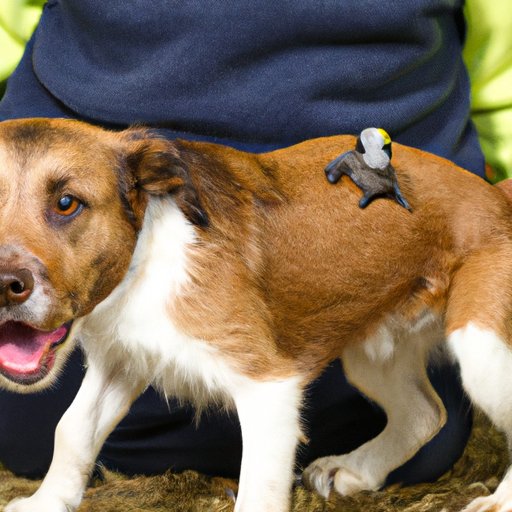Introduction
Dogs have a unique way of communicating with us, and panting is one of their most distinctive methods. While many people believe panting is a sign that a dog is hot or tired, it has a much more important function for our furry friends. In this article, we’ll take a deep dive into the science behind dog panting, explore the different types of panting, discuss how dogs use panting as a language and examine how panting affects their health. By the end, you’ll have a greater appreciation for the role dog panting plays in your pet’s life.
What is the science behind dog panting?
At its core, panting is how a dog regulates its body temperature. Unlike humans, dogs don’t have sweat glands all over their body, so they need to cool off by panting and dissipating heat through their tongue and nasal passages. Panting also helps dogs remove toxins from their body and can serve as a way to communicate with other animals and humans.
The different types of dog panting
Dogs pant in a variety of ways, ranging from light and quiet to heavy and loud. Understanding these differences is crucial for any dog owner. Heavy panting, for example, could indicate that your dog is too hot, in pain or stressed, while light panting may indicate a more relaxed state. Additionally, the sounds a dog makes while panting can tell you a lot about their current state.
Dog panting as a language
Panting isn’t just a way for dogs to regulate their body temperature, but it’s also a way for them to communicate with their owners and other animals. A dog’s breed and personality can play a role in their panting style, and they can convey a range of emotions and feelings through the way they pant. For example, a dog may pant differently when they are happy or excited versus when they are anxious or in pain.
How panting affects dogs’ health
While panting is essential for a dog’s health, excessive panting can have negative consequences, including dehydration, tongue injuries, and respiratory issues. As a pet owner, it’s essential to monitor your dog’s panting and take steps to prevent overexertion and overheating.
Common myths about dog panting
There are many common myths around dog panting that can be harmful to our furry friends. For example, dog owners may believe that panting only occurs when a dog is hot or that their four-legged friend doesn’t need much water. However, these myths can lead to dehydration and other health issues for our pets.
Practical tips for managing your dog’s panting
To keep your furry friend safe and healthy, there are several practical tips you can follow. These include providing access to plenty of water and electrolytes, avoiding overexertion, and keeping your dog cool in hot weather. If you notice excessive panting or changes in your dog’s panting behavior, it’s crucial to speak with a qualified veterinarian.
Conclusion
Dog panting is a complex and important topic for any dog owner to understand. By recognizing the different types and meanings of panting, we can better communicate with our pets and take steps to ensure their health and well-being. Remember to keep an eye on your dog’s panting behavior and seek advice from a veterinarian if you have any concerns. By understanding our furry friend’s breath, we can provide them with the love and care they deserve.
